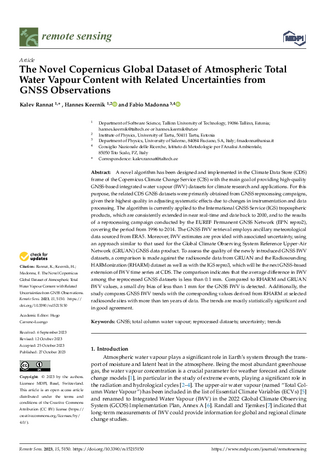A novel algorithm has been designed and implemented in the Climate Data Store (CDS) frame of the Copernicus Climate Change Service (C3S) with the main goal of providing high-quality GNSS-based integrated water vapour (IWV) datasets for climate research and applications. For this purpose, the related CDS GNSS datasets were primarily obtained from GNSS reprocessing campaigns, given their highest quality in adjusting systematic effects due to changes in instrumentation and data processing. The algorithm is currently applied to the International GNSS Service (IGS) tropospheric products, which are consistently extended in near real-time and date back to 2000, and to the results of a reprocessing campaign conducted by the EUREF Permanent GNSS Network (EPN repro2), covering the period from 1996 to 2014. The GNSS IWV retrieval employs ancillary meteorological data sourced from ERA5. Moreover, IWV estimates are provided with associated uncertainty, using an approach similar to that used for the Global Climate Observing System Reference Upper-Air Network (GRUAN) GNSS data product. To assess the quality of the newly introduced GNSS IWV datasets, a comparison is made against the radiosonde data from GRUAN and the Radiosounding HARMonization (RHARM) dataset as well as with the IGS repro3, which will be the next GNSS-based extension of IWV time series at CDS. The comparison indicates that the average difference in IWV among the reprocessed GNSS datasets is less than 0.1 mm. Compared to RHARM and GRUAN IWV values, a small dry bias of less than 1 mm for the GNSS IWV is detected. Additionally, the study compares GNSS IWV trends with the corresponding values derived from RHARM at selected radiosonde sites with more than ten years of data. The trends are mostly statistically significant and in good agreement.
Title
The Novel Copernicus Global Dataset of Atmospheric Total Water Vapour Content with Related Uncertainties from GNSS Observations
Authors
Rannat, K.; Keernik, H.; Madonna, F.
Published
by Remote Sensing (RS) at 2023-10-27
Abstract
